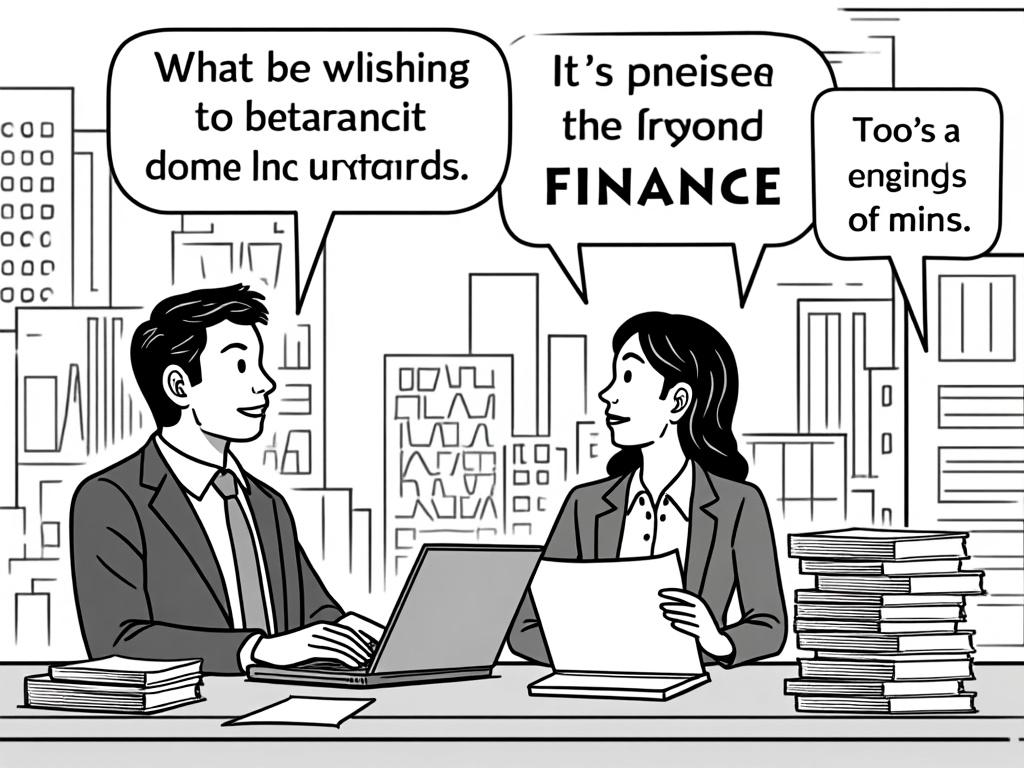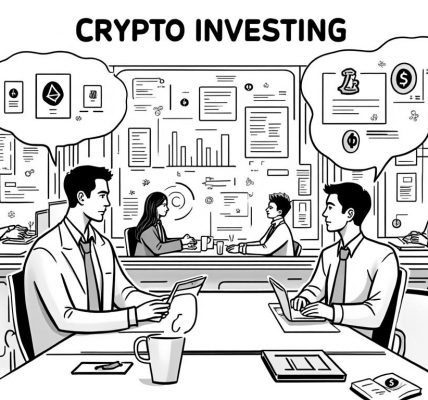
Decentralized Finance (DeFi): Investment Opportunities and Risks
Reading time: 12 minutes
Ever wondered if you could earn 15% annual returns while your traditional savings account offers a measly 0.5%? Welcome to the world of Decentralized Finance, where traditional banking meets blockchain innovation. But here’s the catch—those high returns come with risks that could make your head spin.
Table of Contents
- Understanding DeFi: Beyond the Buzzwords
- Investment Opportunities That Actually Work
- The Risk Landscape: What Nobody Tells You
- Getting Started: Your Practical Entry Strategy
- Your DeFi Roadmap Forward
- Frequently Asked Questions
Understanding DeFi: Beyond the Buzzwords
Let’s cut through the technical jargon. Decentralized Finance isn’t just crypto trading on steroids—it’s a complete reimagining of how financial services work. Think of it as removing the middleman from virtually every financial transaction you’ve ever made.
Quick Scenario: Remember the last time you applied for a loan? Bank visits, credit checks, weeks of waiting, and finally—maybe—approval. DeFi flips this script entirely. You can borrow, lend, trade, and earn interest 24/7, all through smart contracts that execute automatically without human intervention.
Core DeFi Components That Matter
Here’s what actually drives the DeFi ecosystem:
- Liquidity Pools: Think of these as community-funded banks where users pool their assets
- Automated Market Makers (AMMs): The algorithmic traders that never sleep
- Yield Farming: Strategic lending that maximizes your returns
- Governance Tokens: Your voting rights in the platform’s future
The numbers speak volumes: Total Value Locked (TVL) in DeFi protocols reached $176 billion in 2023, despite market volatility. This represents real money from real people seeking alternatives to traditional finance.
Real-World Impact: The Compound Case Study
Consider Sarah, a freelance designer from Brazil. Traditional banks offered her 2% annual interest on savings. Through Compound Protocol, she’s earning 8% APY on her USDC holdings while maintaining dollar stability. More importantly, she can access her funds instantly—no bank holidays, no withdrawal limits.
Investment Opportunities That Actually Work
Let’s get practical. Here are the DeFi investment strategies that consistently deliver results:
Yield Farming: The High-Reward Strategy
Yield farming isn’t gambling—it’s strategic capital deployment. You’re essentially becoming the bank, earning fees from borrowers and traders. Current realistic yields range from 5-25% APY depending on risk tolerance and market conditions.
Pro Tip: Start with established protocols like Aave or Uniswap. They’ve weathered multiple market cycles and maintain robust security practices.
| Strategy | Typical APY | Risk Level | Time Commitment | Minimum Investment |
|---|---|---|---|---|
| Stablecoin Lending | 4-8% | Low | Passive | $100 |
| LP Token Farming | 8-20% | Medium | Active | $500 |
| Governance Staking | 6-15% | Medium | Semi-Active | $200 |
| Flash Loan Arbitrage | 15-50% | High | Very Active | $1,000 |
Liquidity Provision: Becoming the Exchange
When you provide liquidity to platforms like Uniswap, you’re essentially becoming part of the exchange infrastructure. Every trade generates fees—and you get a proportional share.
Real Example: The ETH/USDC pair on Uniswap V3 generated approximately $2.1 billion in trading volume in Q3 2023. Liquidity providers earned roughly 0.3% of this volume in fees—that’s $6.3 million distributed among participants.
Synthetic Assets: Diversification Without Borders
Platforms like Synthetix allow you to gain exposure to traditional assets (stocks, commodities, forex) through blockchain technology. It’s like having a global investment portfolio without the regulatory headaches.
The Risk Landscape: What Nobody Tells You
Here’s the uncomfortable truth: DeFi’s biggest risk isn’t market volatility—it’s overconfidence. Let’s address the real challenges you’ll face.
Smart Contract Risk: The $600 Million Lesson
Smart contracts are only as good as their code. The Poly Network hack of 2021 demonstrated this brutally—$600 million drained in minutes due to a coding vulnerability. While the funds were eventually returned, it highlighted the permanence of blockchain transactions.
Mitigation Strategy: Stick to audited protocols with proven track records. Look for platforms that have undergone multiple security audits from reputable firms like ConsenSys Diligence or Trail of Bits.
Impermanent Loss: The Silent Profit Killer
This is where many newcomers get burned. When you provide liquidity to trading pairs, price movements can result in holding fewer valuable tokens than if you’d simply held them separately.
Quick Math: If you deposited equal values of ETH and USDC when ETH was $2,000, and ETH rises to $3,000, you’ll have less ETH than if you’d just held it. The “loss” becomes permanent only when you withdraw—hence “impermanent.”
Regulatory Uncertainty: The Wild West Problem
DeFi operates in regulatory gray areas. The SEC’s increasing scrutiny of DeFi protocols creates ongoing uncertainty. What’s legal today might not be tomorrow.
DeFi Risk Assessment Visualization
*Risk levels based on historical incidents and expert analysis
Getting Started: Your Practical Entry Strategy
Ready to dive in? Here’s your strategic roadmap that balances opportunity with security.
Phase 1: Foundation Building (Weeks 1-2)
Essential Setup:
- Install MetaMask wallet and secure your seed phrase (seriously, write it down and store it safely)
- Start with $100-500 maximum—consider this your tuition fee
- Connect to Ethereum mainnet and practice sending small transactions
- Join communities like DeFi Pulse, Bankless, or r/DeFi for ongoing education
Pro Tip: Gas fees can eat into small investments. Consider using Layer 2 solutions like Polygon or Arbitrum for cheaper transactions.
Phase 2: Conservative Income Generation (Weeks 3-6)
Start with proven, low-risk strategies:
- Lend USDC on Compound or Aave (4-6% APY)
- Provide liquidity to stablecoin pairs (USDC/USDT)
- Stake governance tokens for voting rewards
Case Study Success: Marcus, a software engineer, started with $1,000 in March 2023. By focusing solely on stablecoin strategies and reinvesting earnings, he generated $85 in passive income over six months—an 8.5% return with minimal risk exposure.
Phase 3: Strategic Expansion (Month 2+)
Once comfortable with basics, explore higher-yield opportunities:
- ETH/stablecoin liquidity pairs
- Cross-protocol yield optimization
- DeFi index tokens for diversified exposure
Well, here’s the straight talk: Successful DeFi investing isn’t about chasing the highest yields—it’s about understanding the risk-reward relationship and building sustainable strategies.
Your DeFi Roadmap Forward
The DeFi landscape evolves rapidly, but your approach should remain methodical. Here’s your practical action plan for the next 90 days:
Immediate Actions (This Week)
- Security First: Set up hardware wallet integration and enable 2FA on all accounts
- Education Investment: Dedicate 30 minutes daily to understanding one DeFi protocol deeply
- Paper Trading: Use platforms like DeFi Pulse to track yields without investing real money
30-Day Milestones
- Complete your first lending transaction on a major protocol
- Join governance voting for at least one platform
- Establish a tracking system for your portfolio performance
- Connect with experienced DeFi users through Discord communities
90-Day Strategic Positioning
- Diversify across 3-5 different protocols to minimize single-point failures
- Develop your own risk assessment framework
- Create automated strategies using tools like Yearn Finance
The future of finance is being built right now, and early participants have significant advantages. Those who understand DeFi today will be the financial architects of tomorrow. But remember—this isn’t just about making money; it’s about participating in a fundamental shift toward financial democratization.
What legacy do you want to build in this new financial paradigm?
Frequently Asked Questions
Is DeFi safe for beginners with limited technical knowledge?
DeFi carries inherent risks that traditional finance doesn’t, primarily due to smart contract vulnerabilities and user errors. However, beginners can participate safely by starting small, using established protocols with strong security records, and focusing on lower-risk strategies like stablecoin lending. The key is treating your initial investment as educational expense rather than expecting immediate profits.
How much money do I need to start earning meaningful returns in DeFi?
You can start with as little as $100, but meaningful returns typically require $500-1,000 minimum due to transaction fees (gas costs). On Ethereum mainnet, gas fees can range from $5-50 per transaction, so smaller amounts get eaten up quickly. Consider Layer 2 solutions like Polygon or Arbitrum where you can earn competitive yields with smaller initial investments.
What happens if a DeFi protocol gets hacked or fails?
Unlike traditional banks, DeFi protocols don’t have FDIC insurance. If a protocol is hacked or fails, you could lose your entire investment. However, some protocols offer insurance options through platforms like Nexus Mutual, and many have emergency pause mechanisms. The best protection is diversification across multiple audited protocols and never investing more than you can afford to lose completely.

Article reviewed by Michelle Hope, Real Estate and Investment Expert, on July 2, 2025




